One of the most common questions I get asked is:
“How do I plant my pond plants?”
Should they be in soil? In pots? Can they go straight into the gravel?
And what about the plants around the pond — do I need to irrigate them?
In this post, I’ll answer all that and more — plus share some handy tips on how you can get plenty of pond plants for free. If you prefer video format you can watch the video:
Planting Directly into Pebble
Most of the pond plants I use are planted straight into the pebble.
When I build a pond, I use EPDM rubber liner and then cover it with rock and pebble. This not only hides the liner but also creates a fantastic environment for beneficial bacteria and organisms — both essential for a low-maintenance pond.
During the dig, I create shelves at various depths to stack large rocks and backfill with pebble. These shelves give us loads of planting opportunities, even in existing ponds (yep — you can add shelves after the fact).
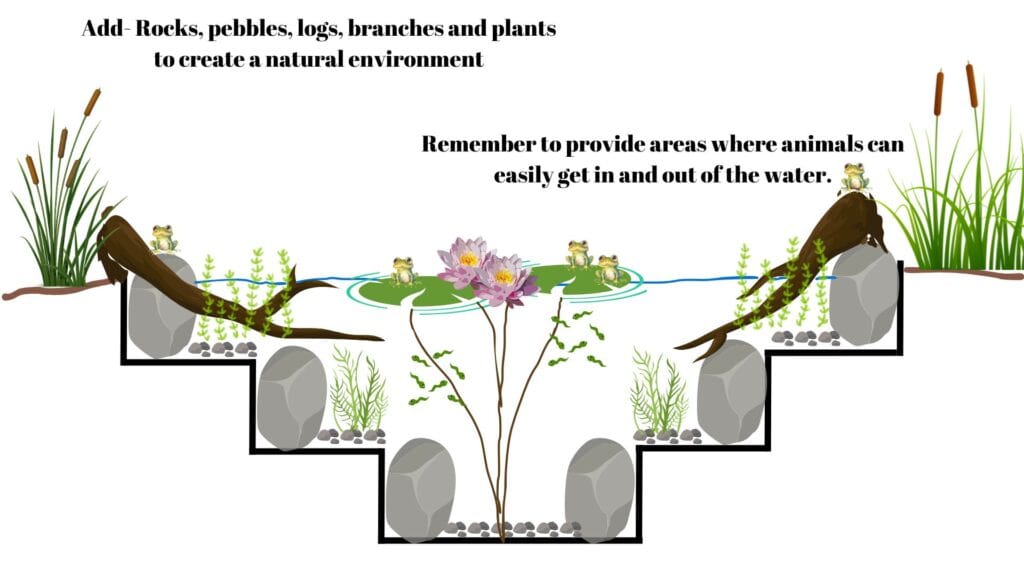
Why I Love Marginal Plants
Marginals are the plants you see around the shallow pond edges, and they’re my favorite for three main reasons:
- They soften the pond’s edges
No one wants a pond that looks like a rock quarry. Marginals give it that lush, natural vibe. - They clean your water
Their roots sit in the pond water and soak up nutrients. That’s the same nutrient that algae would love to use. So these plants help keep your pond clearer — without you lifting a finger. - They come in all shapes and colors
- Trailing: Bacopa
- Bushy: Milfoil
- Grassy: Sweet flag
- Tall & striking: Tassel cord rush
- Colourful: Impatiens
If you want some other ideas for plants heres a more comprehensive list.
Pro Tip: Mix and match
Use low growers near your favorite viewing areas so they don’t block the view, and taller plants as a backdrop near waterfalls or big rocks. Diversity is key to a natural look.

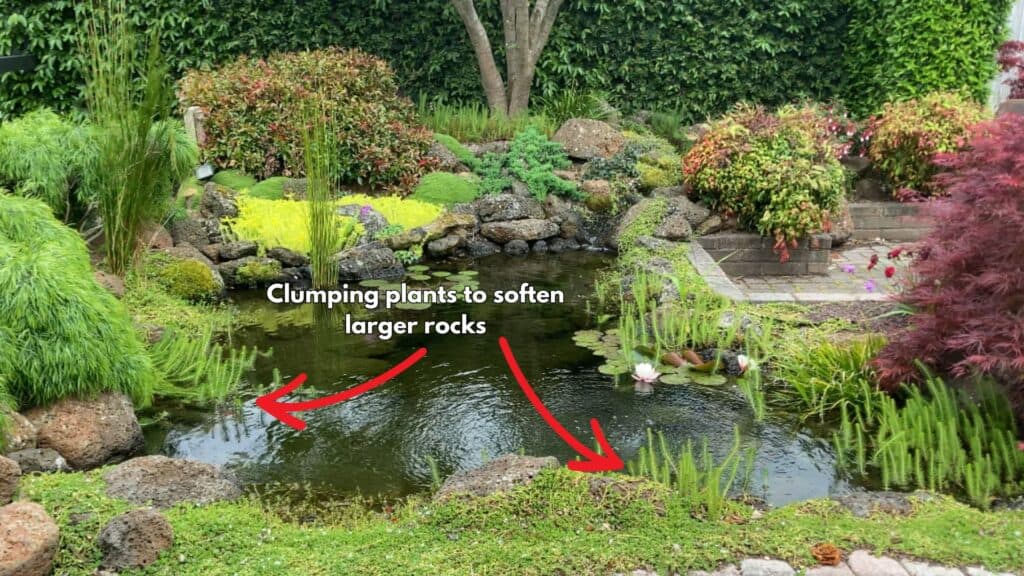
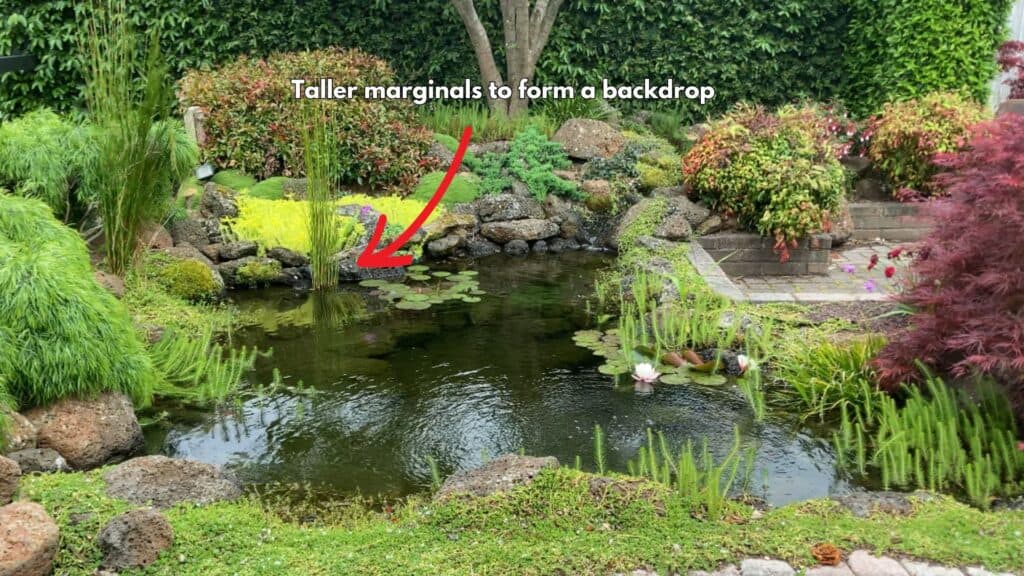
How to Plant Them
When you buy these plants, they’re usually in soil-filled pots.
I remove all the soil — this forces the plant to draw nutrients from the pond, not from the pot.
Just dig a little depression in the pebble and anchor the plant. That’s it — no watering needed.
Worried About Plants Escaping the Liner?
Some trailing plants (like creeping Jenny) might grow out of the pond and into surrounding soil — no big deal.
What you do need to watch out for are clumping plants with strong roots (like rushes or grasses). These can eventually pull the liner down, causing a leak from a low edge — the most common source of pond leaks.
Learn more about finding leaks.
So check your edges occasionally. If you spot something trying to escape, it’s best to deal with it early.
Submerged Plants: Good for Fish Cover, Not Essential for Filtration
I’ve planted submerged plants like eelgrass and water hawthorn straight into the pebble base.
Their roots take up nutrients and provide oxygen to the substrate, and their foliage creates hiding spots for fish.
But they’re not as helpful for filtration. When they die back, their decaying foliage can contribute to nutrient buildup.
If you want the benefit, be sure to trim and remove them now and then — ideally on a warm day when you don’t mind getting wet!
If you want the complete guide on how I build my personal ponds you can find that here.
Floating Plants: Great (but Handle with Care)
Floating plants like duckweed and water lettuce are excellent nutrient sponges.
But be warned: once they’re in, they’re hard to remove.
If you’re in a cooler climate, use warm-climate species — they’ll die off naturally when it gets cold, giving you a fresh start each season.
When I Use Pots and Soil (Hint: It’s Only for Lilies and Lotus)
In my natural ponds, the only time I use pots is for water lilies and lotus. These plants are heavy feeders and want rich soil. I use:
- Heavy clay soil or even kitty litter (natural zeolite)
- A layer of sand or fine gravel to trap nutrients
- Aquatic fertilizer tablets twice a season
Lilies like about 30cm (1 foot) of water, while lotus want their roots submerged with foliage above water.
Do I Water the Plants Around the Pond?
Only when they’re new.
I live in a part of Australia that gets decent rainfall. Once the plants are established, they’re on their own.
If I were more diligent, maybe my ferns and maples would look fresher by summer’s end — but hey, I’m not trying to win any garden awards.
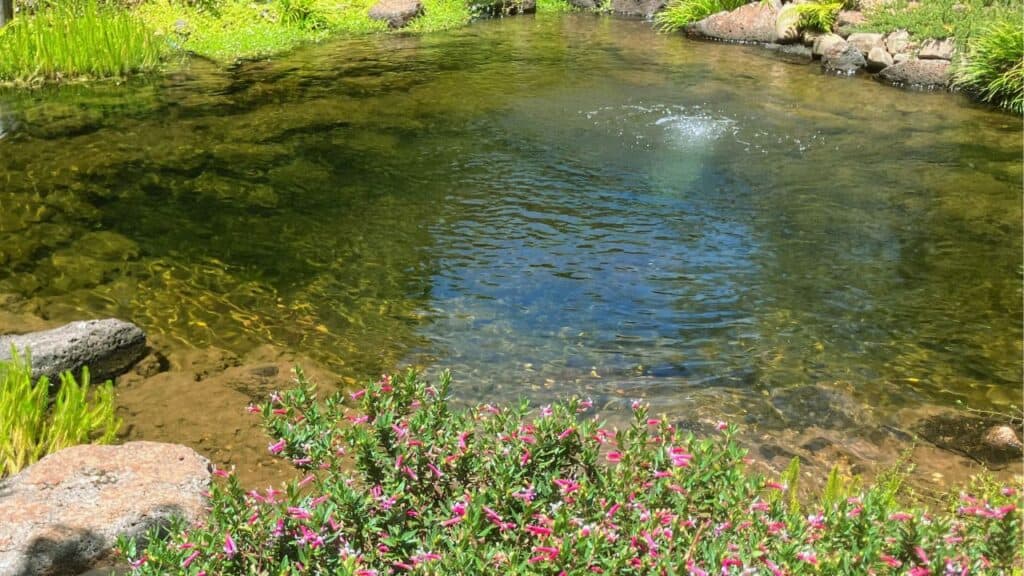
How to Get Free Pond Plants (or at Least Cheap Ones)
Pond plants can be pricey — often double the cost of regular plants — but they grow like crazy.
- Join local pond groups — people often give away extras
- Propagate them yourself:
- Stem plants: Snip and replant
- Trailing plants: Break off a rooted clump
- Runner plants: Split at the root
- Lilies/Lotus: Divide the rhizomes when they outgrow the pot
Even if you buy just one of each type, you’ll be able to multiply them in no time.
Final Thoughts
Pond plants are not just decoration — they’re your filtration crew, your wildlife habitat, and your natural algae control system.
Most of them can be planted directly into pebble, no pots or soil needed. The key is smart placement, a bit of seasonal trimming, and the occasional giveaway to your pond mates.
Want more pond tips that actually work?
👉 Grab my free planning tools
👉 Or check out my 11-step blueprint to building a low-maintenance pond that practically runs itself.
See you next time — and happy ponding!
– Kev
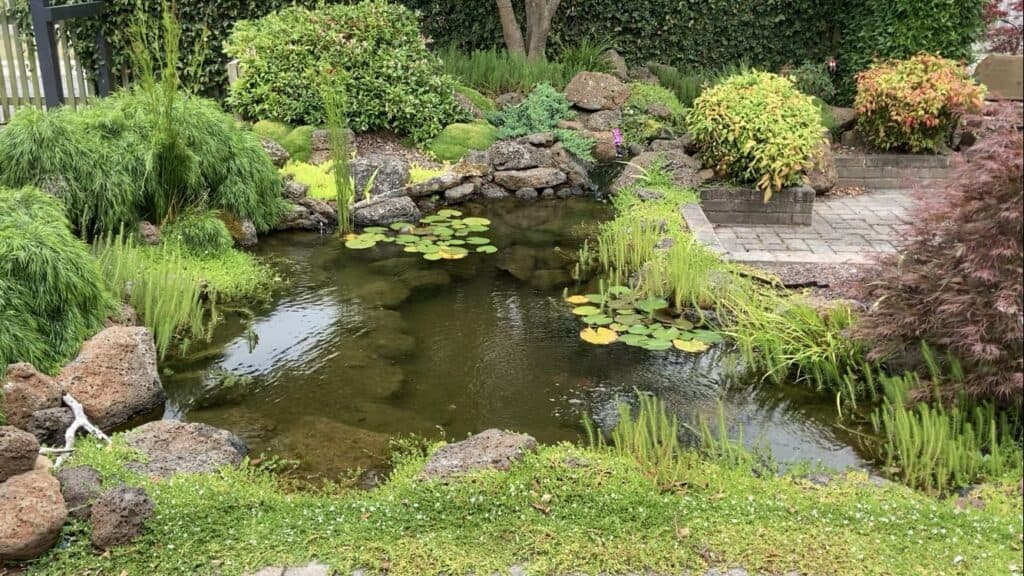
Join my free email list
If you would like to join my free email list click the button below.
I promise I won’t spam you, I’ll only send information I think can help you save money building and maintaining a pond.

